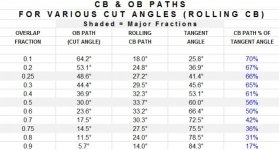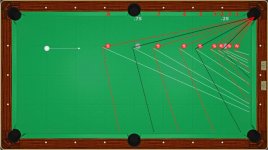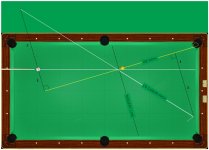Hello. Is there a tried and true method (drill) for training my brain to know where a centerball-shot CB is going to go with only natural roll after striking the OB ?
I'm confounded by this after many false starts at trying to grasp it so I just want to head on the right path this time. I feel that my conundrum is akin to the people who can't just see how to aim. Aiming and executing shots has always been so obvious to me so I sort of wonder if I just don't "have it in me" to learn this concept since I have yet to figure it out.
I'm a decent player, used to be much better (at shooting, always a weak shape maker). I understand the concepts of the 90 degree and 30 degree rule, I understand spin and can use it "correctly" to move the CB around.... only very roughly. 90 degree sliding CB, I get. Rolling CB, forget it. Even Dr Dave's "peace sign" method doesn't work all that well for me. I have and have read several books on pool
My home table is littered with gummed dots for practice a la Robert Byrne but I'm still missing the fundamental eye for leaves despite hours and hours of various drills with so much other stuff to watch on the table. So, again, what can be done to specifically focus on getting it into my brain "on which line is the CB naturally going to roll" on any given cut shot? I know it may seem ridiculous to not see the answer, just as I don't understand (I say that without judging) how people can't see shooting angles. I know that those people can be taught so how do people who don't see, more or less, precise angle of deflection learn this?
BTW I used the percent sign because I have no idea how to make a degree sign.

IT is degrees not percent.
Thank you in advance.


